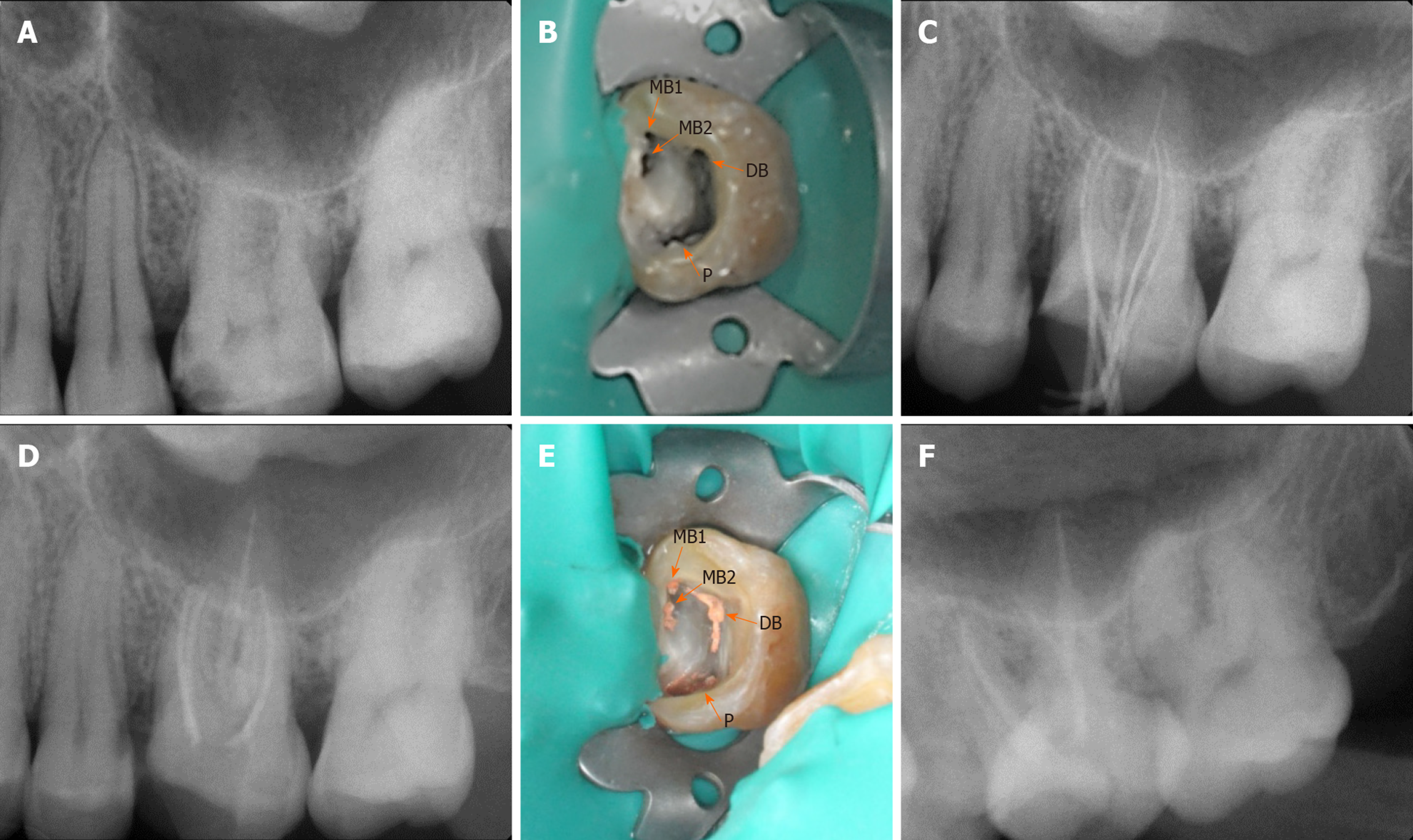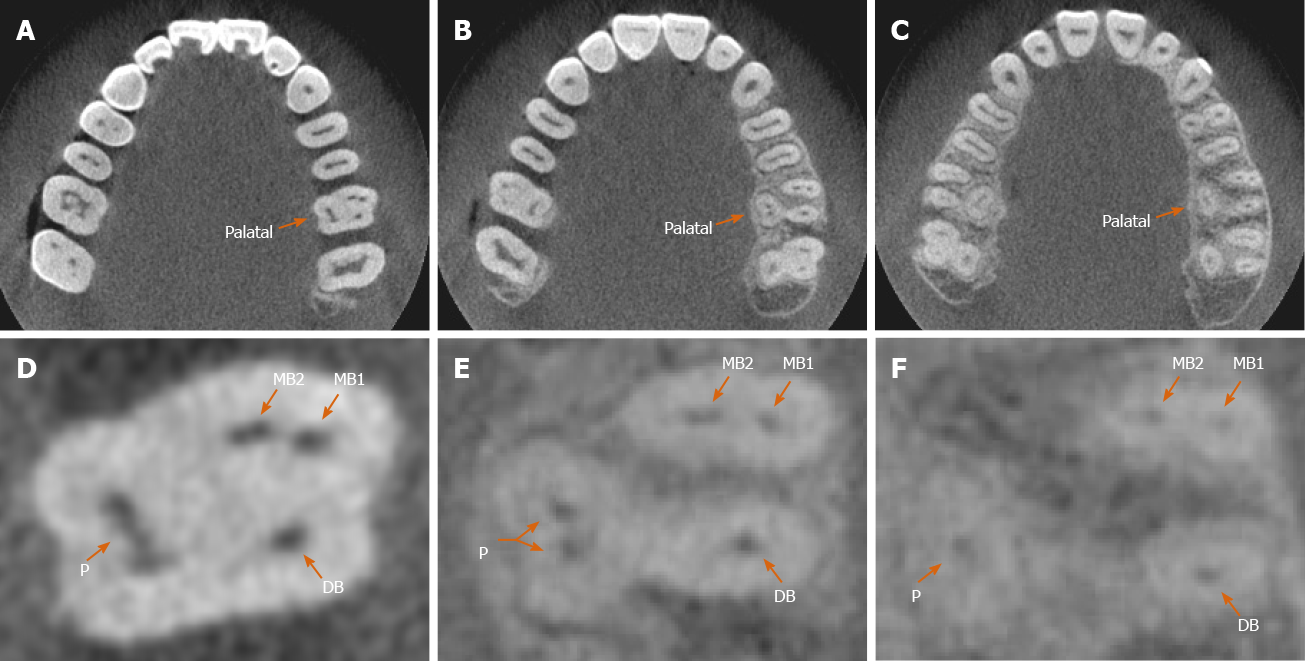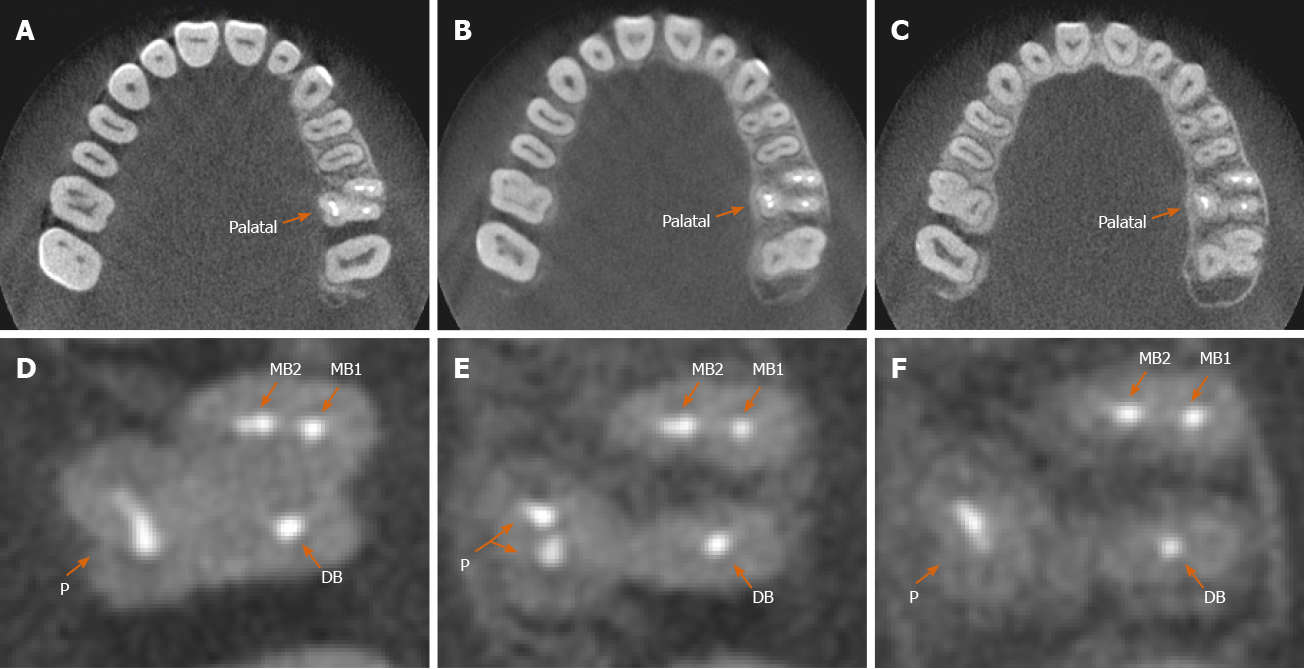Copyright
©The Author(s) 2020.
World J Clin Cases. Jun 26, 2020; 8(12): 2590-2596
Published online Jun 26, 2020. doi: 10.12998/wjcc.v8.i12.2590
Published online Jun 26, 2020. doi: 10.12998/wjcc.v8.i12.2590
Figure 1 Clinical and X-ray images showing the treatment process.
A: Preoperative radiograph of the left maxillary first molar; B: Access opening showing two mesiobuccal root canals (MB1, 2), one distobuccal root canal, and one entrance on the 1-2-1-shaped palatal canal (black arrow); C-E: Working length radiograph (C), postobturation radiograph (D), and postobturation clinical image (E) of the left maxillary first molar; F: Postobturation radiograph of the tooth at 1 year. MB: Mesiobuccal; DB: Distobuccal.
Figure 2 Analysis of anatomical structure by cone beam computed tomography before the treatment.
A-C: Cone beam computed tomography images of the left maxillary first molar showing axial sections at the cervical (A), middle (B), and apical levels (C); D-F: Enlarged axial section cone beam computed tomography images at the cervical level showing 1-shaped palatal root canal (D), middle level showing 2-shaped palatal root canal (E), and apical level showing one palatal root (F) of the left maxillary first molar (orange arrows). MB: Mesiobuccal; DB: Distobuccal.
Figure 3 Analysis of anatomical structure by cone beam computed tomography after the treatment.
A-C: Cone beam computed tomography images showing axial sections at the cervical (A), middle (B), and apical levels (C) 1 year after root canal therapy; D-F: Enlarged axial section cone beam computed tomography images at the cervical (D), middle (E), and apical levels (F) of the left maxillary first molar (orange arrows). MB: Mesiobuccal; DB: Distobuccal.
- Citation: Zhang ZH, Yao HL, Zhang Y, Wang X. Endodontic management of the maxillary first molar with special root canals: A case report and review of the literature. World J Clin Cases 2020; 8(12): 2590-2596
- URL: https://www.wjgnet.com/2307-8960/full/v8/i12/2590.htm
- DOI: https://dx.doi.org/10.12998/wjcc.v8.i12.2590











